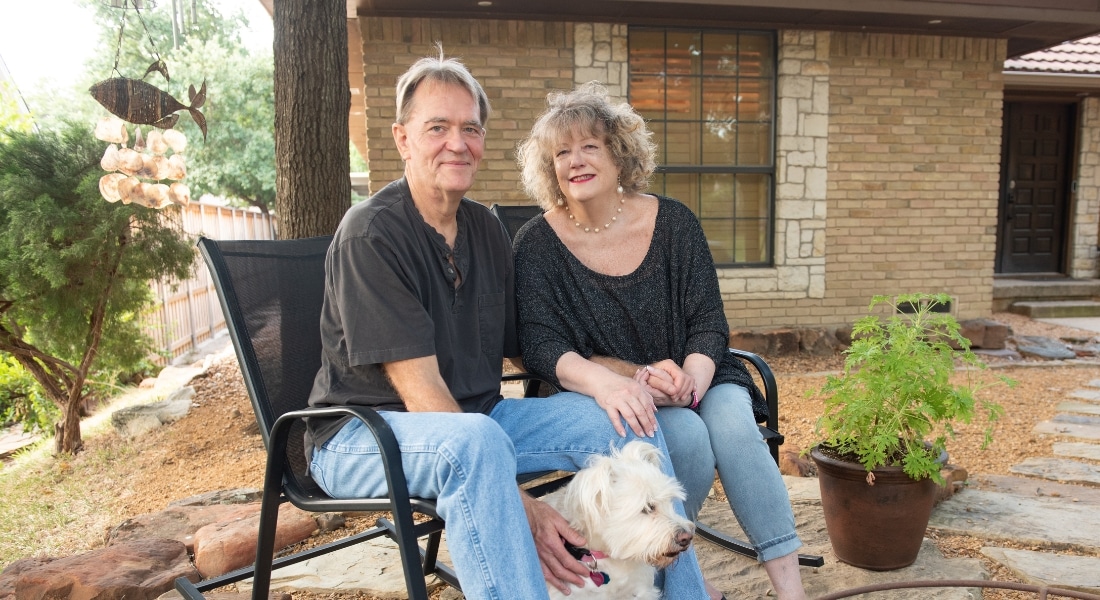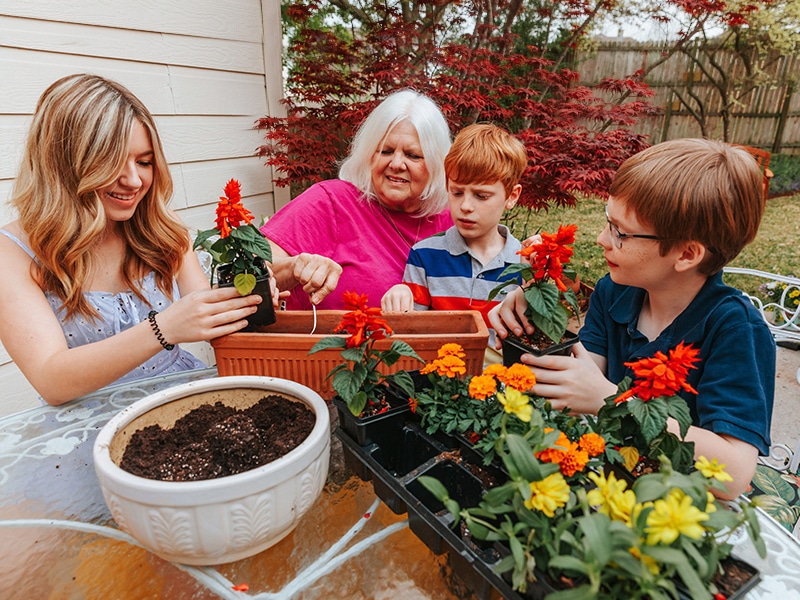Susan Fellers survived a stroke last spring thanks to the quick thinking of her well-read husband and the staff at Methodist Richardson Medical Center — along with a good dog named Rowdie.
Taking his cue from an agitated Rowdie, Don Fellers called 911, and paramedics rushed Susan to the nearest comprehensive stroke center, minutes away at Methodist Richardson.
“If my husband hadn’t known the signs of stroke and acted so quickly, there is no way I would have recovered so well,” says Susan, 60.
Don, 62, credits his quick reaction that night — after Rowdie alerted him, of course — with reading a recent edition of Shine magazine, where he learned the acronym BE FAST to spot the telltale signs of a stroke.
Eighty percent of strokes are preventable. Understand your risk factors by taking our health risk assessment. Visit MethodistHealthSystem.org
“Looking back, I’m convinced I recognized the signs of a stroke because of a story I had read in Shine magazine just a few months prior,” Don says. “Knowing the symptoms helped me act quickly.”
Even before that moment, however, there was a chain of events that put the couple in the right place, with the right staff, at the right time for Susan to make a full recovery. That’s because it’s the final letter in BE FAST that is most important.
“For stroke patients, time is crucial,” explains Frederic Nguyen, MD, neurologist on the medical staff at Methodist Richardson, who was on-call when Susan arrived.
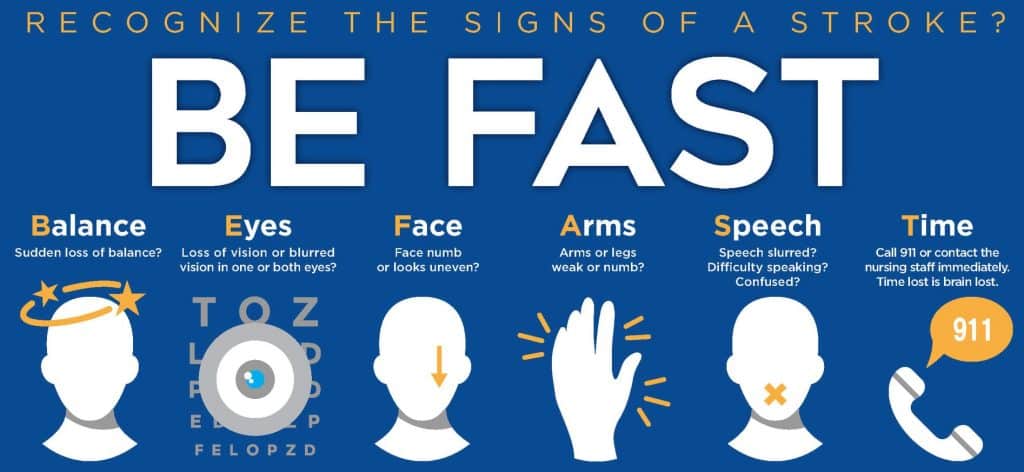
Don knew his wife was having a stroke because he read about the symptoms in Shine magazine.
FALSE LABOR, REAL STROKE
In March, Susan and Don, longtime owners of an ad agency, were eagerly awaiting the birth of their second granddaughter when they got a false alarm.
“Our oldest daughter called us one evening saying she was in labor and needed Susan to watch our first granddaughter,” Don says. “Hours later she called again and said that it was false labor and they were heading home.”
Don picked up Susan from their daughter’s house and on their way home to Richardson, they decided to get a bite to eat. If not for that pit stop, Susan might have been alone in bed when her stroke happened.
“On a normal night Don would read in his office for a few hours after dinner before going to bed,” Susan says. “Because we had been out so late that night we got ready for bed at the same time which wound up being a crucial factor in what happened next.”
Thankfully, Rowdie was on alert, and he had some stroke-savvy backup.
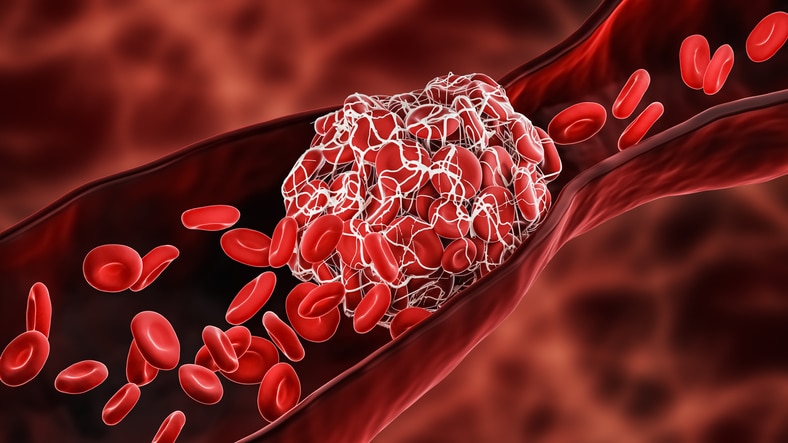
An ischemic stroke occurs when a blood clot blocks an artery leading to the brain.
STROKE TEAM WORKS QUICKLY
When Don came into their bedroom he noticed that the family dog was acting unusual. Instead of sleeping on the bed, she was sitting rigidly on Don’s pillow staring at Susan.
“I chuckled and asked ‘What happened to Rowdie?’ but Susan didn’t reply so I repeated the question,” Don says. “It was then I noticed she was looking down, had one arm hanging loosely at her side, and she still wasn’t responding.”
Don called 911 and explained his wife was likely having a stroke. Emergency medical services arrived four minutes later and took Susan to Methodist Richardson.
The stroke team at Methodist Richardson was ready and waiting for Susan’s arrival minutes later thanks to an alert from paramedics that they were on the way.
“Our highly specialized, multidisciplinary stroke team is trained to provide a rapid response to all incoming stroke patients,” Dr. Nguyen says. Within minutes of arriving, the patient is undergoing advanced diagnostic procedures to determine which stroke treatment is most appropriate.”
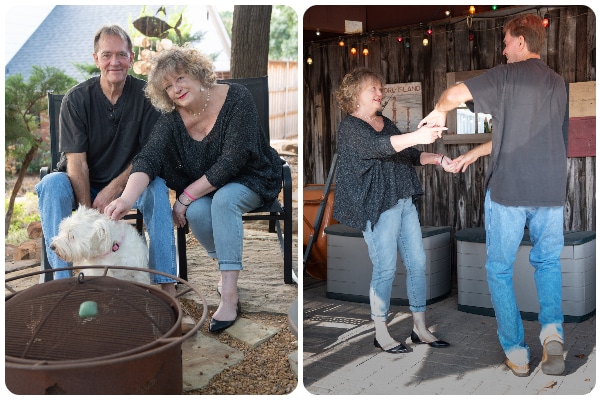
Susan and Don are already back to dancing, one of their favorite pastimes — along with spoiling Rowdie.
REMARKABLE RECOVERY
Tests showed Susan was experiencing the most common type of stroke, ischemic, which occurs when the blood supply to part of the brain is blocked or significantly reduced.
Susan was quickly given an IV drug known as tPA, or tissue plasminogen activator, which breaks up a blood clot and restores blood flow to the brain. A CT angiogram also revealed a large clot in the middle cerebral artery, the largest, on the left side of her brain. It was clear Susan would require further advanced stroke treatment.
Mougnyan Cox, MD, neuro-interventional radiologist on the medical staff at Methodist Richardson, performed a mechanical thrombectomy, a minimally invasive technique that removes blood clots using a catheter inserted into a blood vessel to grab and remove the blood clot.
A week later, Susan came home from the hospital, just in time for her second granddaughter to be born seven days later. She and Dr. Nguyen credit her recovery for the fast work of the team at Methodist Richardson, with an assist from her Shine-reading husband.
“Susan’s remarkable recovery is largely due to how quickly she received medical care from a specialized, fast-acting stroke team at a comprehensive stroke center,” Dr. Nguyen says.

